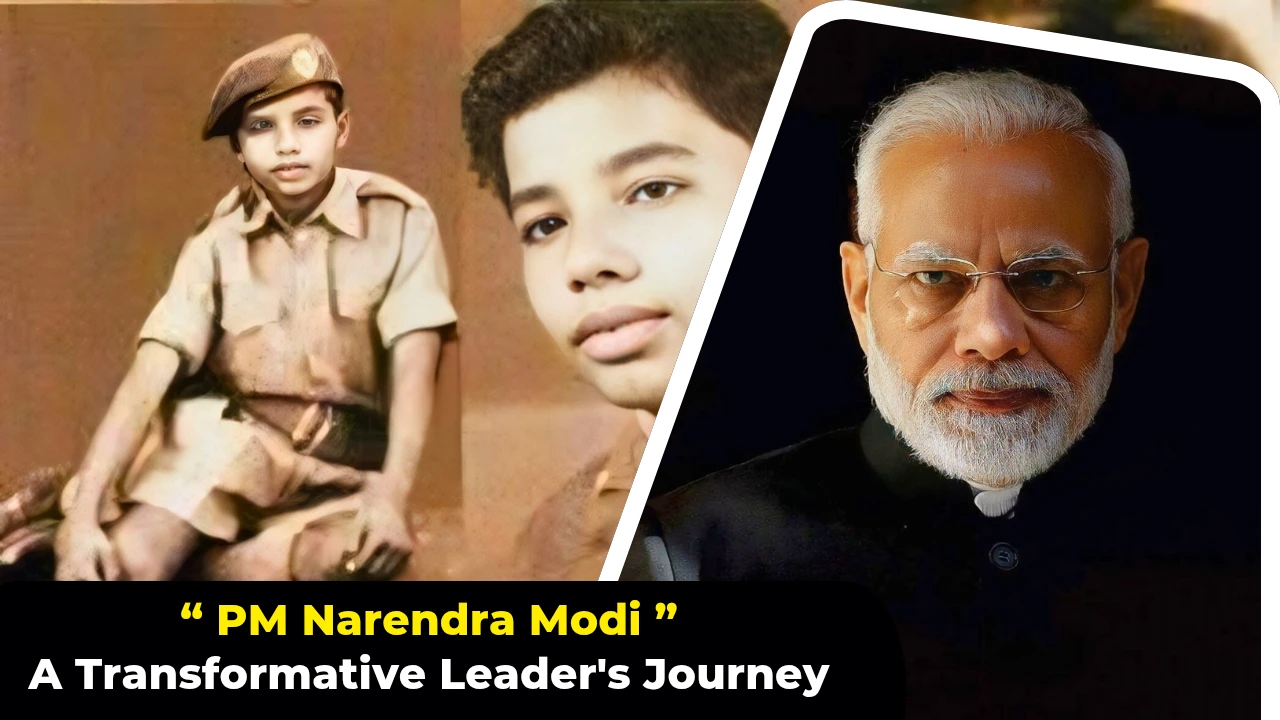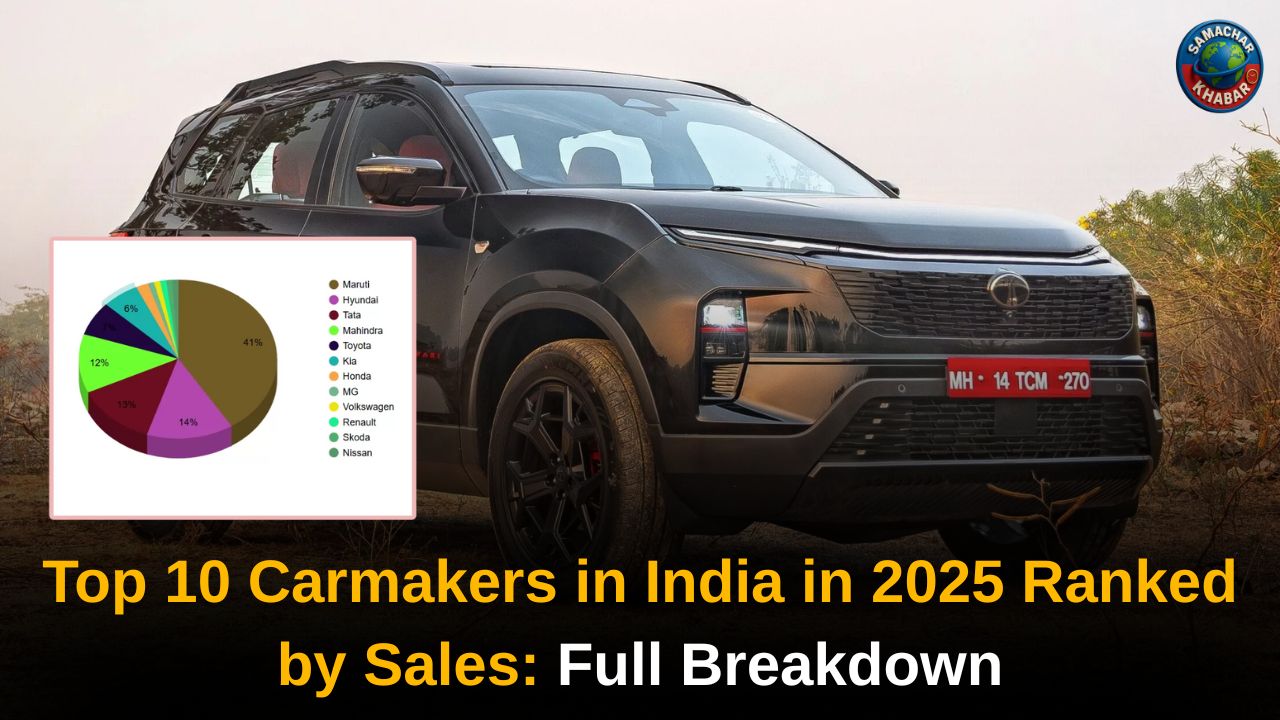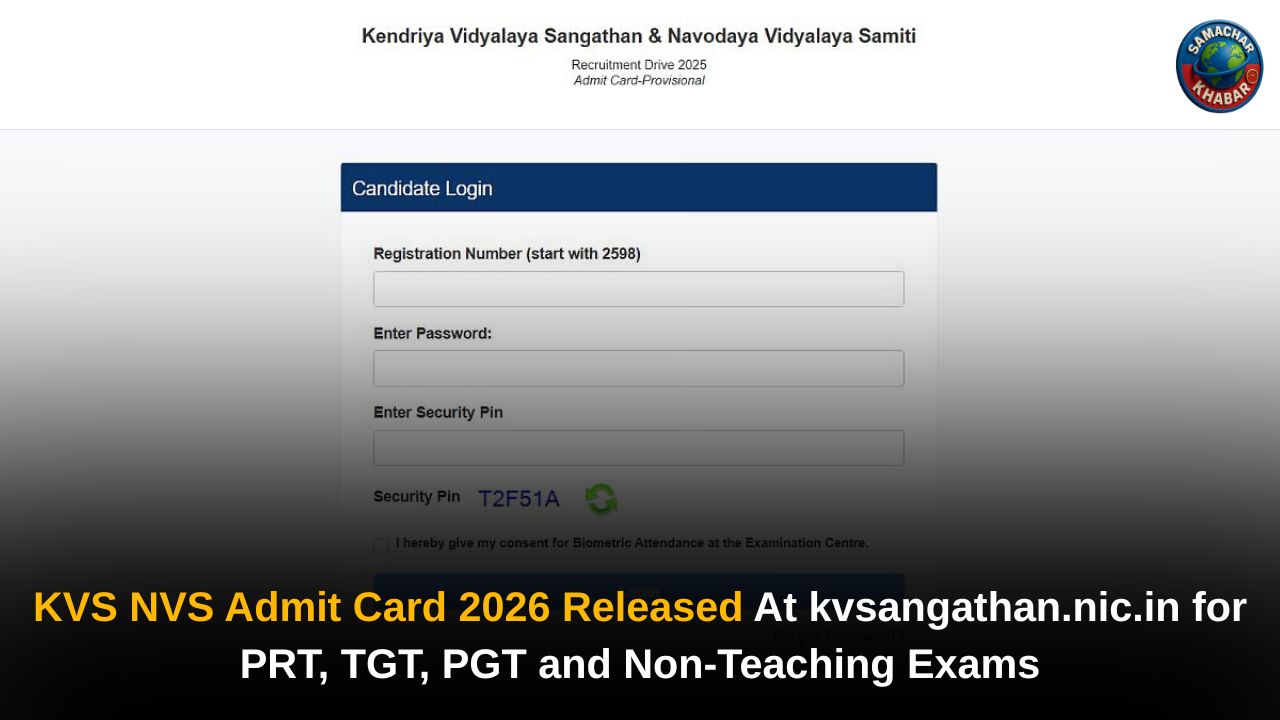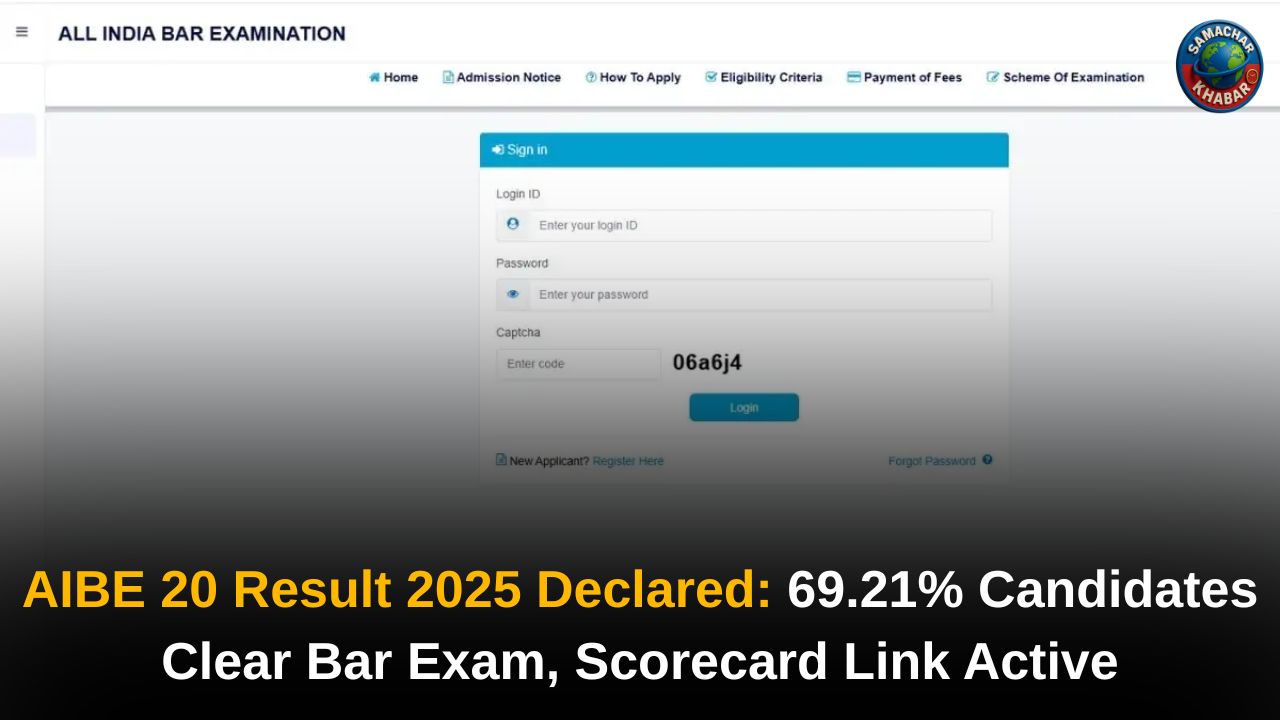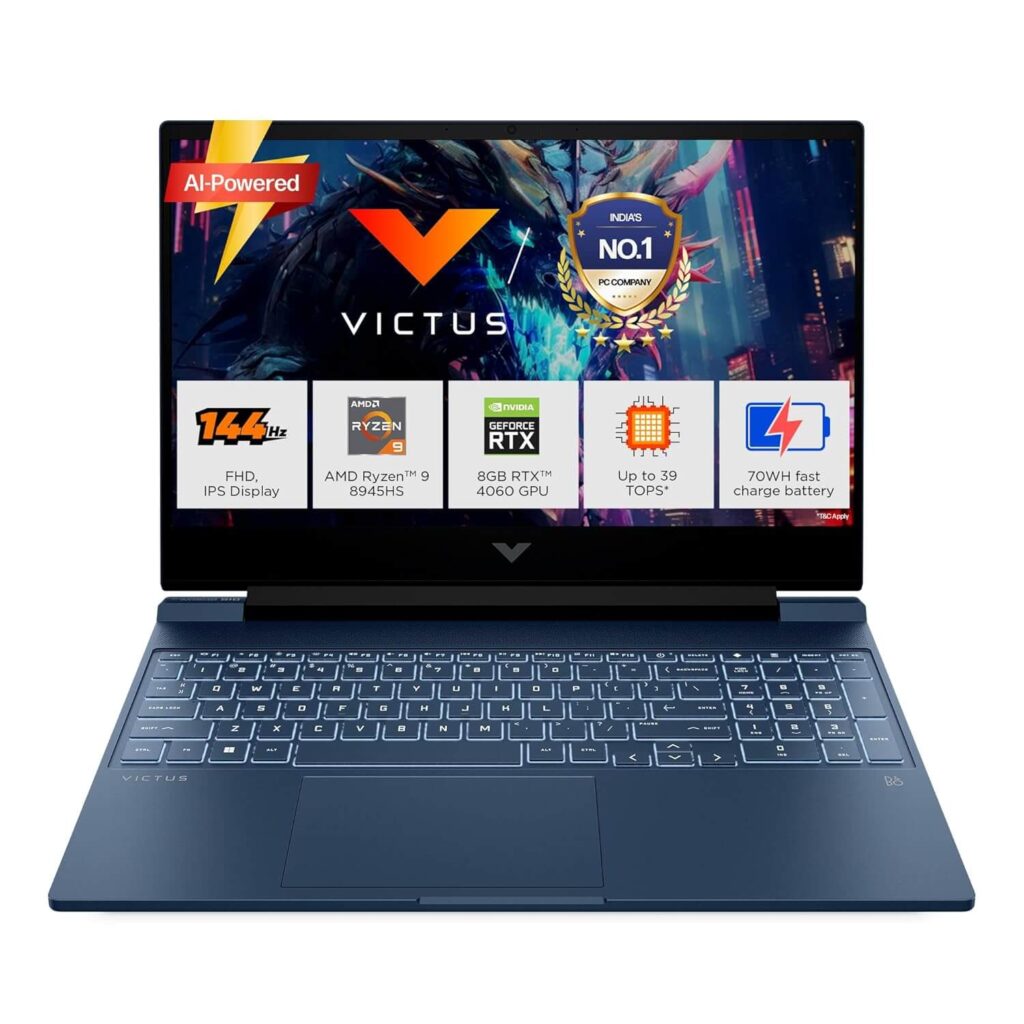PM Narendra Modi: Narendra Damodardas Modi, the 14th and current Prime Minister of India, is a figure who has indelibly stamped his mark on the nation’s political landscape. His journey from a small town in Gujarat to the highest office in the world’s largest democracy is a story of perseverance, strategic acumen, and an unwavering commitment to his vision for India. This biography delves into the life, career, and monumental achievements of PM Modi, offering insights into the man behind the global leader.
Early Life and Humble Beginnings
Born on September 17, 1950, in Vadnagar, Mehsana district, Gujarat, Narendra Modi’s childhood was far from privileged. He was the third of six children to Damodardas Mulchand Modi and Hiraben Modi.
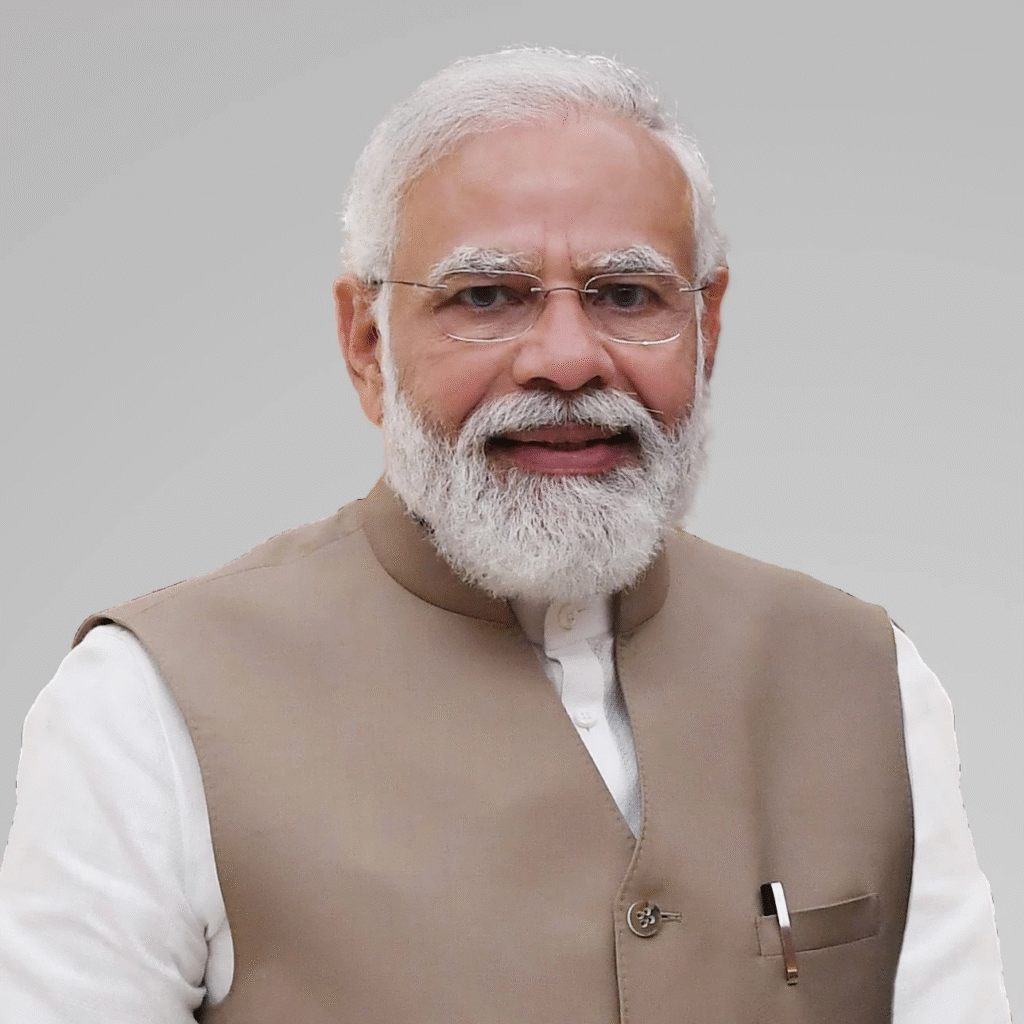
The family belonged to the backward Ghanchi community. Young Narendra often helped his father sell tea at the Vadnagar railway station, a detail that has become a powerful symbol of his humble origins. These formative years instilled in him a deep understanding of the common person’s struggles and aspirations.
Modi’s early education was at a local school in Vadnagar. Even in his youth, he displayed a keen interest in theatre and debate, suggesting an inherent ability to connect with and influence an audience. His spiritual inclination led him to briefly wander through the Himalayas in his late teens, seeking self-discovery and enlightenment. This period of asceticism further shaped his disciplined approach to life and work.
A Path to Public Service: The RSS Years
Upon returning from his spiritual travels, Modi became a full-timepracharak (propagandist) of the Rashtriya Swayamsevak Sangh (RSS), a Hindu nationalist volunteer organization, in 1971. This marked a pivotal turning point in his life.
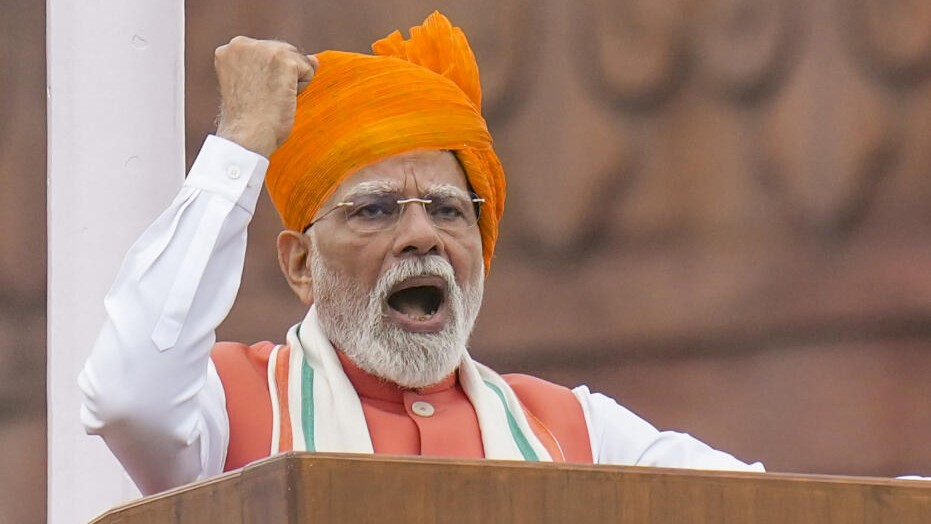
The RSS provided him with an ideological framework and a rigorous training ground in organizational skills and discipline. During the Emergency (1975-1977), when civil liberties were suspended, Modi worked underground, distributing pamphlets and organizing protests, showcasing his defiance and commitment to democratic principles.
His dedication and organizational prowess quickly caught the attention of RSS leaders. He rose through the ranks, eventually being deputed to the Bharatiya Janata Party (BJP) in 1987.
Political Ascendancy in Gujarat
Modi’s political career in the BJP began with significant impact. He was instrumental in strategizing for the party, playing a key role in the BJP’s victory in the 1990 Gujarat assembly elections and the 1991 Lok Sabha elections. His strategic brilliance was undeniable, and he quickly became a prominent figure within the state unit.
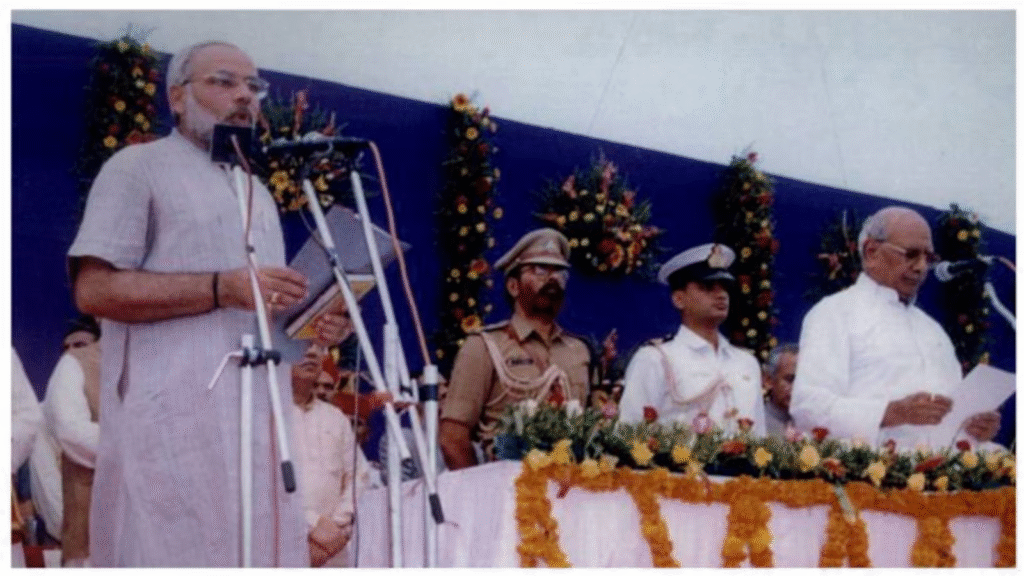
In 1995, Modi was made the National Secretary of the BJP, and later, the party’s General Secretary (Organization). This national exposure further honed his political skills and expanded his network.
Chief Minister of Gujarat (2001-2014)
The biggest leap in Modi’s political career came in October 2001, when he was appointed the Chief Minister of Gujarat. He took over at a challenging time, following an earthquake in Bhuj and a period of political instability. His tenure as CM was marked by a strong focus on economic development, infrastructure building, and good governance, often referred to as the “Gujarat Model” of development.
Also Read: PM Modi Inaugurates Purnia Airport: A New Dawn for Bihar’s Seemanchal Region
Key initiatives during his Chief Ministership included:
- Vibrant Gujarat Summits: These biennial investor summits attracted significant foreign and domestic investment, transforming Gujarat into a manufacturing hub.
- Infrastructure Development: Massive projects in road construction, power generation, and urban development.
- Decentralization and E-governance: Efforts to make government services more accessible and efficient.
Despite controversies, particularly concerning the 2002 Gujarat riots, Modi successfully led the BJP to four consecutive assembly election victories in the state, a testament to his popular appeal and effective governance. His long and successful stint as CM laid the groundwork for his national ambitions.
The Journey to Prime Ministership
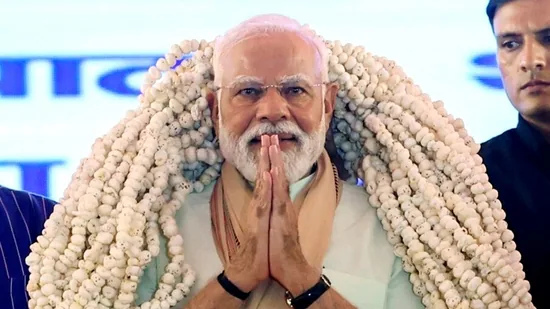
As the 2014 general elections approached, there was a growing clamor within the BJP for Modi to lead the party’s national campaign. His development agenda and strong leadership image resonated with a significant section of the electorate. He was declared the BJP’s prime ministerial candidate, embarking on an unprecedented, high-energy campaign that leveraged social media and massive rallies.
Prime Minister of India (2014-Present)
In May 2014, the BJP, under Modi’s leadership, secured a historic majority in the Lok Sabha, the first time a single party had done so in three decades. PM Modi was sworn in as the Prime Minister, ushering in a new era of Indian politics. He was re-elected with an even larger mandate in 2019, solidifying his position as one of India’s most powerful leaders.
Key Achievements and Policy Initiatives
PM Modi’s tenure as Prime Minister has been characterized by ambitious reforms and flagship programs aimed at transforming India.
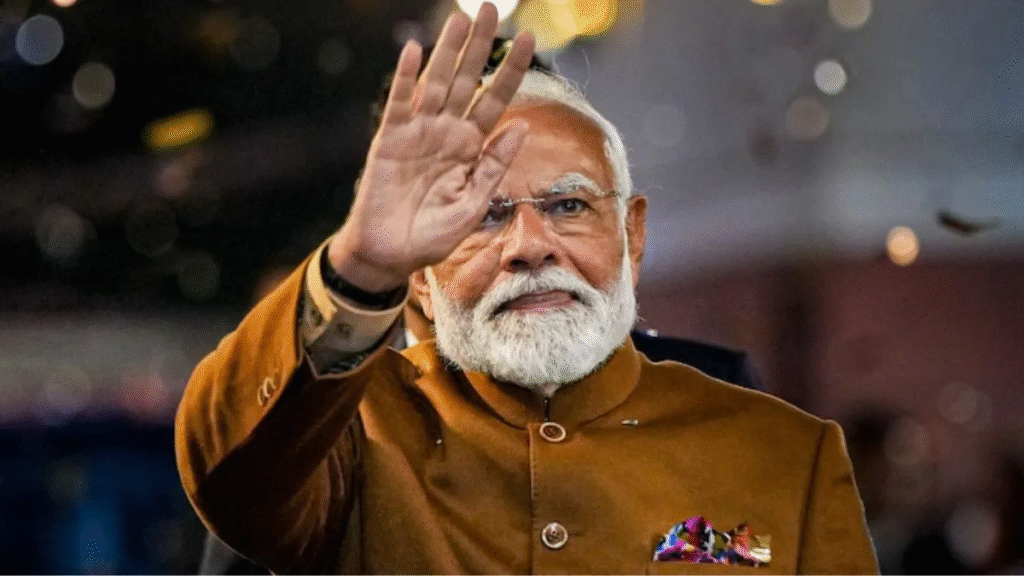
Economic Reforms and Development:
- Goods and Services Tax (GST): A landmark indirect tax reform that unified India’s fragmented tax system.
- Demonetization: A controversial but significant move aimed at curbing black money and promoting digital transactions.
- Make in India: An initiative to boost domestic manufacturing and attract foreign investment.
- Startup India: To foster entrepreneurship and innovation.
Social and Welfare Programs:
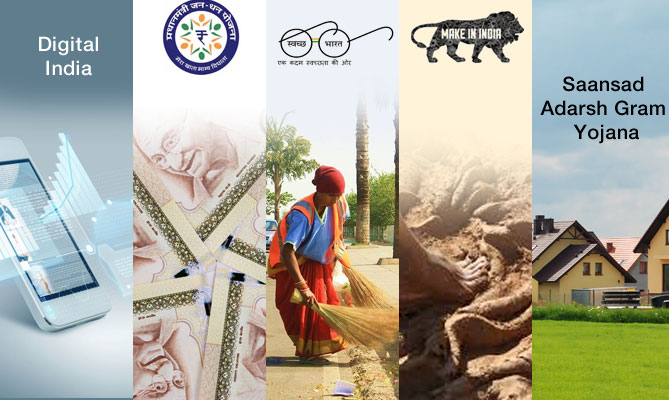
- Swachh Bharat Abhiyan (Clean India Mission): A nationwide sanitation campaign that significantly improved access to toilets. According to the Ministry of Drinking Water and Sanitation, rural sanitation coverage increased from 38.7% in 2014 to over 100% in 2019.
- Pradhan Mantri Jan Dhan Yojana: A financial inclusion scheme that provided bank accounts to millions of unbanked citizens.
- Ayushman Bharat: A national health protection scheme providing health coverage to vulnerable families.
- Ujjwala Yojana: Providing LPG connections to women from BPL households.
Foreign Policy:
- Act East Policy: Strengthening ties with Southeast Asian nations.
- Strengthening Bilateral Relations: Engaging actively with major global powers and neighboring countries.
- Yoga Day: Spearheading the international recognition of Yoga Day at the UN.
Digital India:
- Promoting digital literacy and making government services available online.
PM Modi’s Net Worth
Estimating the exact net worth of public figures like PM Modi can be challenging, as personal assets are often declared and updated periodically. Based on his latest asset declaration in 2023, his movable assets were reported to be around ₹3.07 crore (approximately $370,000 USD).
This primarily includes bank deposits. He does not own any real estate, having donated his share in a residential plot in Gandhinagar. It’s important to note that as a public servant, his income is primarily from his salary as Prime Minister and is subject to public disclosure.
Leadership Style and Public Image
PM Modi is known for his charismatic and decisive leadership style. He is a powerful orator, capable of captivating large audiences. His emphasis on “Sabka Saath, Sabka Vikas, Sabka Vishwas” (Together, for everyone’s growth, with everyone’s trust) reflects his inclusive development agenda. He is also recognized for his distinctive fashion sense, often sporting traditional Indian attire.
Challenges and Criticisms
Despite his popularity and achievements, PM Modi’s tenure has also faced significant challenges and criticisms. These include concerns over economic slowdowns, issues related to employment, handling of social unrest, and perceived threats to democratic institutions. The COVID-19 pandemic also presented unprecedented challenges to his administration.
Shaping India’s Future
PM Narendra Modi‘s biography is a testament to an extraordinary political journey. From a humble tea seller to India’s most powerful leader, his life story is one of unwavering ambition and a relentless pursuit of his vision for a strong, developed, and globally influential India.
His policies and programs have undeniably left a lasting impact on various facets of Indian society and economy. As India navigates the complexities of the 21st century, PM Modi continues to be a central figure shaping its destiny.

